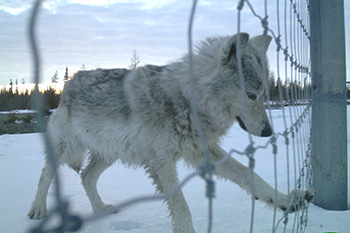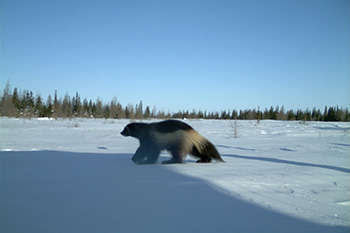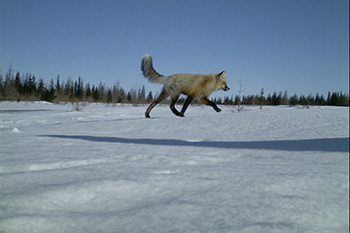Dr. Doug Clark on cameras
Wapusk National Park
Looking back, a significant milestone for wildlife research in Wapusk National Park occurred about a decade ago.
In 2010, Dr. Doug Clark, an Associate Professor at the University of Saskatchewan’s School of Environment and Sustainability and former Wapusk park warden, received approval to install the first set of remote wildlife cameras in the park. Former Wapusk resource conservation manager Sheldon Kowalchuk installed the first devices and soon after, invited the researchers to expand on that number.
While the cameras had proven useful in significantly different environments, Dr. Clark was curious to see how they would work in a place like northern Manitoba.

“They worked like gangbusters in tropical forests and woodlands. The entire remote-camera industry is based around white-tailed deer hunting,” he explained. “We didn’t know what we were going to get. We had no clue what was going to work.”
Ultimately, though, the cameras have proved to be a resounding success, despite admittedly being more work than expected to sift through the data.
The plan to install the cameras came shortly after new research fenced-in camps were built in Wapusk at Broad River and Owl River sites in 2008 and 2009 and seemed to bring more bears into the vicinity. There was hope that the cameras could answer why this was happening.
Dr. Clark and former Wapusk resource conservation manager Sheldon Kowalchuk spent 10 days testing cameras and experimenting with infrared trail counters at the Broad River camp in 2011. They installed steel containers around the cameras to protect them from inquisitive creatures — it would not be out of character for a polar bear to gnaw or otherwise damage a standalone device.
The cameras detect activity up to 22 metres (70 feet) away, taking a series of three photos at one-second intervals when triggered. It turns out, however, that many photos are taken from much closer.
“Fortunately, when polar bears come to camps, they tend to come right up,” he said.

The cameras have captured more than just polar bears, with grizzlies, grey wolves, moose and caribou among the species wandering into the camera’s line of vision. But it turns out that a rarely sighted creature — the wolverine — also happens to make for some of the most intriguing photos for reasons other than its scarcity.
“We only see them every couple of years, on average,” Dr. Clark said. “If they’re up close to the fence, they are so fast that they are usually mid-air during the exposure, the very first photo of three that the camera is programmed to take.
“Their reflexes are just insanely fast.”
The cameras are designed to be as non-invasive as possible, using an infrared flash, though there seem to be infrasonic noises that are outside of the human hearing range but are audible to some animals.
Other notable photos include a rutting bull caribou challenging the camera, displaying all the typical behaviours such as pawing, putting its head down, urinating, and blowing snot from its nose, and two bears that were caught in a baffling pose that researchers theorize must be a mating technique.
Researchers will continue to use the cameras to investigate wildlife activity in new ways. For example, Dr. Clark noted research underway by University of Saskatchewan Ph.D. student Danielle Rivet will further probe to what degree humans may be attracting or repelling the bears while also looking at changes in the sea-ice system.

The cameras also play a large role in citizen engagement. Dr. Clark noted that there is a research proposal in place to purchase more cameras. The project would enlist community members to install cameras on trap lines, mostly outside of Wapusk, to expand the network that way.
Involving the local community more directly in research is a direction Dr. Clark is thrilled to be part of.
“The big trend in northern research in Canada and many other parts of the Arctic has been more local involvement and control,” he said, noting other northern jurisdictions, including the Wapusk National Park Management Board, put research permits through a community review process, for example.
Citizens are also encouraged to contribute to the Arctic Bears Project that Dr. Clark runs on Zooniverse, processing pictures snapped by the trail cameras.- Date modified :